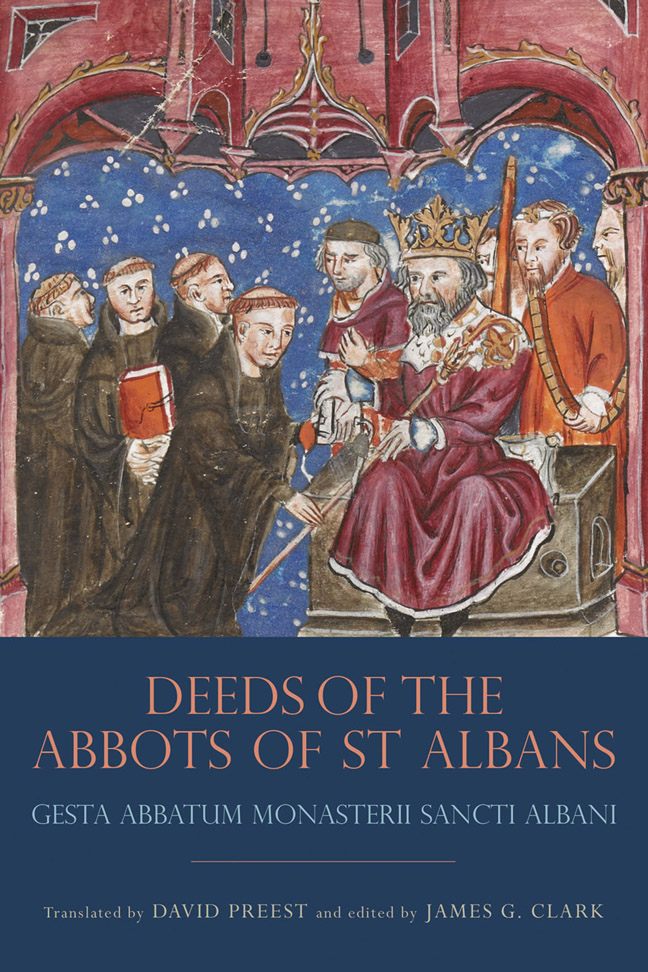Book contents
- Frontmatter
- Contents
- List of Illustrations
- Acknowledgements
- List of Abbreviations
- Introduction
- The Translation and its Sources
- The Deeds of the Abbots of St Albans
- Appendix A Thirteenth-Century Précis of the Deeds of the Abbots of St Albans: British Library, MS Cotton Vitellius a XX
- Bibliography
- Index
26 - John De Maryns
Published online by Cambridge University Press: 17 February 2024
- Frontmatter
- Contents
- List of Illustrations
- Acknowledgements
- List of Abbreviations
- Introduction
- The Translation and its Sources
- The Deeds of the Abbots of St Albans
- Appendix A Thirteenth-Century Précis of the Deeds of the Abbots of St Albans: British Library, MS Cotton Vitellius a XX
- Bibliography
- Index
Summary
The seisin of the abbey is secured by the King's escheator after the death of the aforementioned abbot but by virtue of a charter for which he had petitioned, the prior and convent remain free
And so, that the body of the same abbot was buried on 22 October in the above mentioned year of our Lord before the high altar by the venerable fathers of Westminster and Woburn with not a modest crowd of religious, knights and others; all of whom, with the prior himself, were splendidly entertained. Nicholas de Whethamstede, sub-escheator, arrived to take seisin in the name of the king. The prior, with the cellarer, had the charter read, which had been obtained from the king concerning an interregnum about a month before the abbot’s death, in the presence and hearing of the king's justiciar, Sir Henry Spigurnel, Sir John Aygnel and many others. So Nicholas left the barony to the disposal of the prior and monastery, according to the royal concession. Thus was the seisin released by the king's writ.
Some monks were sent to the Lord King for a licence to elect an abbot
When all the exequies for the dead abbot had been solemnly performed by the abbots of Westminster and Woburn, John de Maryns then prior with the general consent of all the brothers sent three brothers to the king to obtain a licence for electing an abbot. They were Gregory Blosine, John de Stoppelle and the sub-prior of Tynemouth, and, if one of the first two happened to fall sick, his place could be taken by the third, the sub-prior. So the two monks set off and found the king at Linlithgow in Scotland, fighting against the Scots. At once they greeted the king and showed him the letter patent of the prior and convent, according to custom.
- Type
- Chapter
- Information
- The Deeds of the Abbots of St Albans<i>Gesta Abbatum Monasterii Sancti Albani</i>, pp. 576 - 615Publisher: Boydell & BrewerPrint publication year: 2019

